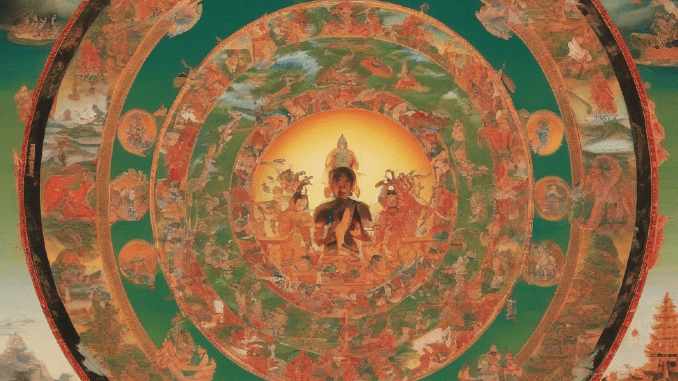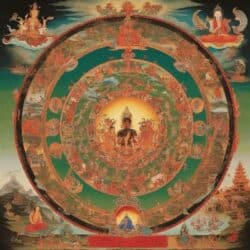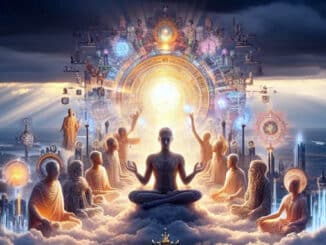
Samsara: The Eternal Cycle of Life and Rebirth
For spiritual seekers and those interested in Eastern philosophies, Samsara is a central concept. It describes the endless cycle of birth, death, and rebirth that plays a crucial role in many Indian religions and philosophical traditions. In this article, we delve deep into the meaning, origin, and spiritual implications of Samsara.
The Meaning of Samsara
Samsara (Sanskrit: संसार saṃsāra) literally translates to “continuous wandering” or “flowing through”. It describes the cycle of life in which souls or consciousness wander through repeated births, deaths, and rebirths. This cycle is often considered to be full of suffering, as it is associated with constant change and impermanence.
Origin and History
The term Samsara has its roots in ancient Indian philosophies and religions. It first appears in the Upanishads, the philosophical texts of Hinduism, which were composed between approximately 800 and 200 BCE. From there, the concept spread to other Indian traditions such as Buddhism and Jainism.
Samsara in Different Traditions
- In Hinduism
In Hinduism, Samsara is understood as the endless cycle of birth, death, and rebirth, determined by karma (the sum of one's good and bad deeds). The ultimate goal is to achieve Moksha – liberation from this cycle. - In Buddhism
Buddhists view Samsara as the cycle of suffering (Dukkha), caused by ignorance and attachment. The goal is to reach Nirvana, a state beyond Samsara. - In Jainism
Jains regard Samsara as the cycle of rebirths from which one can free oneself through strict asceticism and non-violence.
The Structure of Samsara
In many traditions, Samsara is described as consisting of various realms or levels:
- God realms
- Human realm
- Animal realm
- Ghost realm
- Hell realms
Depending on one's karma, a soul can be reborn in one of these realms.
The Wheel of Life: A Visual Representation of Samsara

In Tibetan Buddhism, Samsara is often depicted through the “Bhavachakra” or Wheel of Life. This complex symbol shows:
- The six realms of existence
- The twelve links of dependent origination
- The three poisons of the mind (greed, hatred, delusion)
Overcoming Samsara: Spiritual Paths to Liberation
Many spiritual traditions offer ways to transcend Samsara:
- Meditation and Mindfulness: To recognize the true nature of reality
- Karma Yoga: Selfless action without attachment to the fruits of one's deeds
- Bhakti Yoga: The path of devotion and love
- Jnana Yoga: The path of knowledge and wisdom
The Relevance of Samsara in the Modern World
Although Samsara is an ancient concept, it remains relevant for modern spiritual seekers:
- It offers a perspective on the cycles of life and the nature of existence
- It promotes compassion and ethical action through the understanding of karma
- It encourages self-reflection and spiritual growth
Conclusion: Samsara as a Path to Self-Knowledge
The concept of Samsara invites us to ponder the deeper questions of life. It encourages us to look beyond the horizon of a single life and consider our existence in a larger cosmic context. Whether one believes in literal rebirth or sees Samsara as a metaphor for the cycles of life – the concept offers valuable insights for any spiritual path.
By engaging with Samsara, we can develop a deeper understanding of the nature of reality, our own consciousness, and the path to inner freedom. It is a concept that invites us to grow beyond ourselves and search for a deeper truth that lies beyond the impermanence of material life.
02.11.2024
Uwe Taschow
As a writer, I think about life. My own stories tell me who I am, but also who I can be. I wring insights from life in order to shape, to recognize truths that are worth writing for. That's one of the reasons why I work as co-editor of the online magazine Spirit Online.






Hinterlasse jetzt einen Kommentar